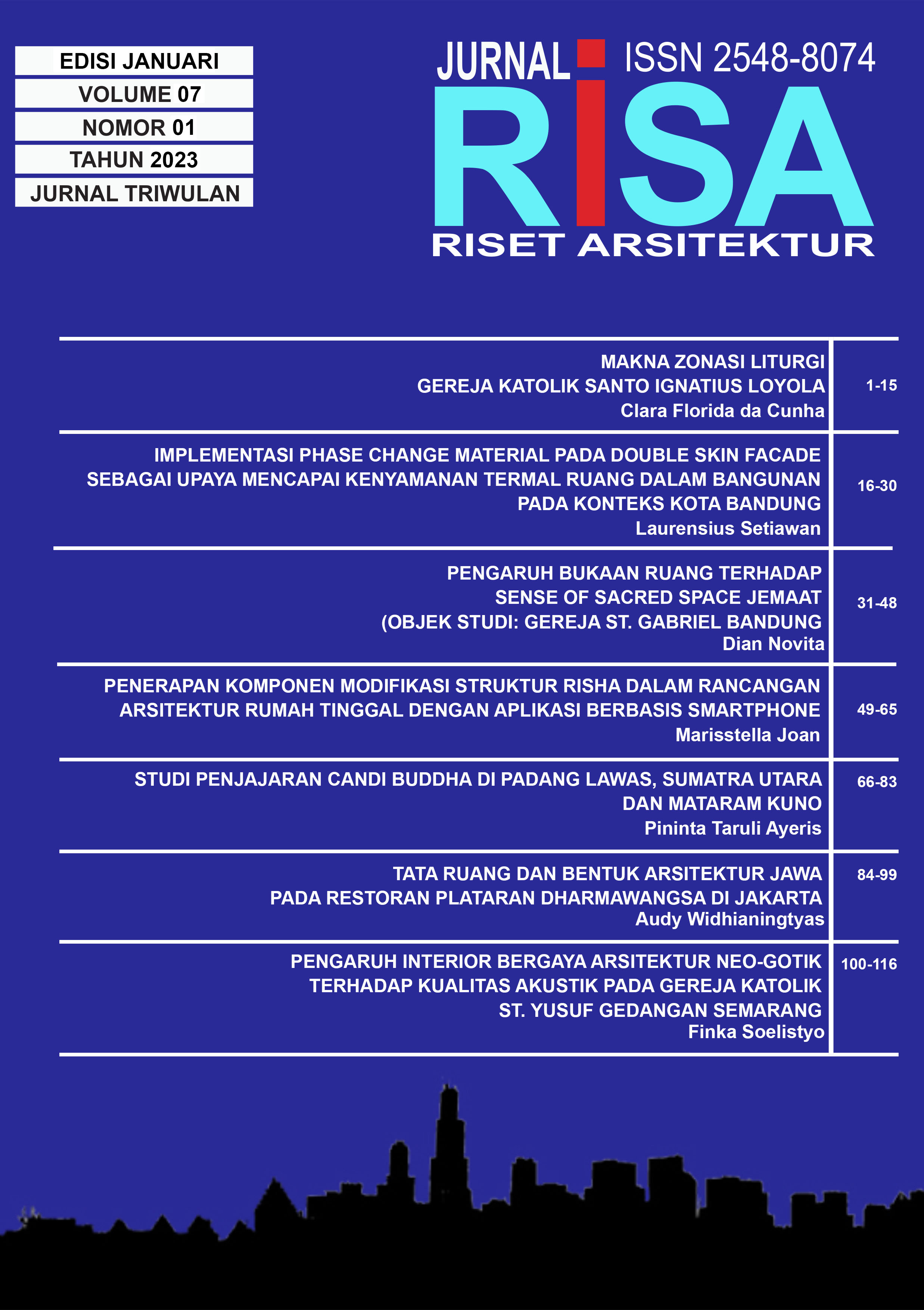THE MEANING OF SANTO IGNATIUS LOYOLA CATHOLIC CHURCH’S LITURGICAL ZONATION
DOI:
https://doi.org/10.26593/risa.v7i01.6358.1-15Abstract
Abstract - After the Second Vatican Council was held, the Catholic Church which tends to be warm with its gothic style identity is now taking on more diverse forms because the church has begun to accept diversity on earth. The various forms of church buildings do not show their function as God's house. There are churches that look like malls, museums, stadiums, and so on. While the main function of the church is to accommodate liturgical activities which are symbolic activities to praise and worship God. As we know activities affect the space requirements, as well as liturgical activities that move linearly so that they affect the linear form of the church. Pope Benedict XVI became concerned about the fading of meaning in the catholic church, thus forming a congregation to discuss the meaning of sacredness in the church. It is important to discuss this to see if the meaning of the centralized form of the Catholic Church is similar to the meaning of the church in accordance with its linear activity. With that, the purpose of this study is to reveal the meaning of the liturgical zonation of the Catholic Church of St. Ignatius Loyola with a Spectrum of Meaning approach.
The methodology used in this study is a descriptive method with a qualitative-deductive approach. The first method is to collect collective data by recording study object data and opening the building into 3 zones of liturgy space, called Narthex, Nave and Sanctuary with Theory Of Property And Composition. Second, to make reference to the plan and liturgical zonation of the Catholic Church with the approach of Martasudjita, Eliade, Hoffman, Jones, and Barrie. Third, data collection analysis by interview triangulation of sources to architects, church users, and church visitors with a semantic scale. Fourth, using the Spectrum of Meaning theory to reveal the meaning contained in each Zone Of Liturgy Spaces.
The result of the study is the meaning of the liturgical zonation of the Church of St. Ignatius Loyola is dominated by the meaning of collective convention with relation to man-made causality. The meaning of man-made causality creates universal convention that the composition of space and architectural elements forms a church related to the symbolic meaning that supports liturgical activities well and expresses the meaning of symbolic values that underlie faith events of liturgical activities. This research aims to be a reference for theoretical and practical architects, church managers, and people to understand the composition of space and architectural elements that create the architectural meaning of the Catholic Church.
Keywords: Catholic Church, Meaning, Form, Liturgi, Spectrum of Meaning
Additional Files
Published
Issue
Section
License
Copyright (c) 2023 Clara Florida da Cunha

This work is licensed under a Creative Commons Attribution-NonCommercial-ShareAlike 4.0 International License.












